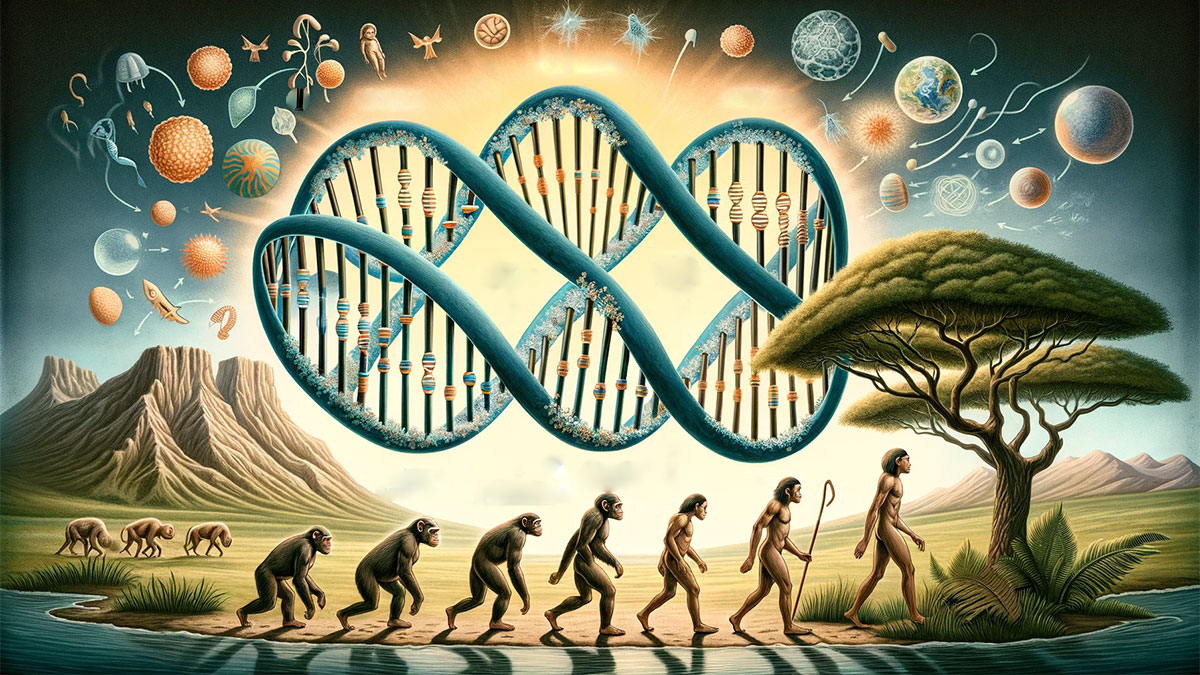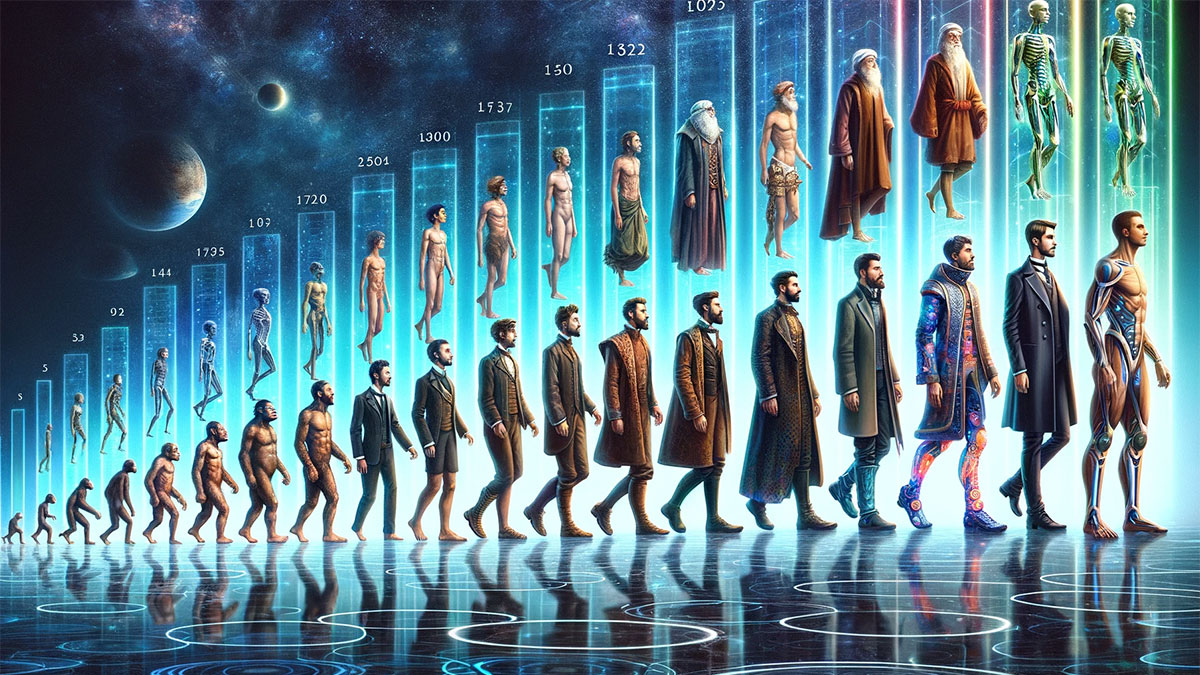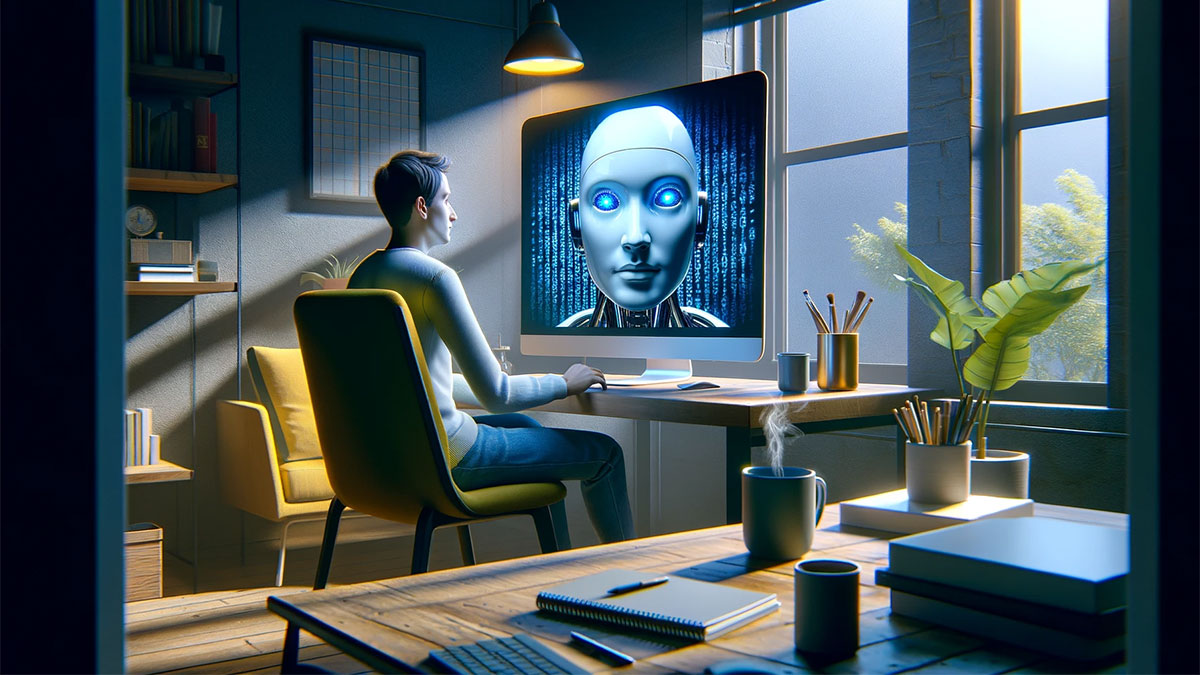As humans continue to evolve, it raises the question of what humans will look like in the future. With the advancements in technology and changes in the environment, it is difficult to predict the exact physical and cognitive changes that will occur. However, scientists have made several predictions and theories about the future of human evolution.
The role of evolution in human development cannot be ignored. Over the past few million years, humans have evolved to adapt to their changing environment. With the current state of the environment, humans may continue to evolve to adapt to the changes in the environment. Additionally, modern life and technology have a significant influence on human evolution, and technology may continue to shape and change the human body in the future.
Key Takeaways
- Human evolution is influenced by both the environment and modern life.
- The role of technology in human evolution cannot be ignored.
- While it is difficult to predict the exact changes, scientists have made several predictions of human evolution.
The Role of Evolution
Understanding Human Evolution
Human evolution is the process by which humans and their ancestors have evolved. The study of human evolution involves analyzing the fossil record, genetic variation, and adaptation. The fossil record provides evidence of the physical changes that have occurred in hominin species over time, while geneticists study the human genome to understand the genetic changes that have occurred.
The Impact of Natural Selection
One of the key mechanisms driving human evolution is natural selection. Natural selection is the process by which certain traits are favored over others because they provide an advantage in survival and reproduction. Over time, these advantageous traits become more common in the population, while less advantageous traits become less common.
Genetic Variation and Adaptation
Genetic variation is the raw material for evolution. Mutations, genetic recombination, and gene flow all contribute to genetic variation. Adaptation is the process by which organisms become better suited to their environment. Genetic variation is essential for adaptation because it provides the diversity of traits that natural selection can act upon.
The study of human evolution has revealed that humans have evolved in response to a variety of environmental pressures. For example, the development of bipedalism in early hominins was likely driven by the need to move efficiently across the savannah. Similarly, the evolution of larger brains in Homo erectus and Homo sapiens may have been driven by the need to adapt to increasingly complex social environments.
Overall, the study of human evolution provides insight into the processes that have shaped the human species over time. By understanding these processes, we can better understand how humans may continue to evolve in the future.
Influence of Modern Life and Environment
Impact of Modern Lifestyle
Modern life has had a significant impact on human evolution, and this will likely continue to be the case in the future. With the advent of technology, humans have become more sedentary, leading to a rise in obesity rates. This trend is likely to continue unless people become more aware of the importance of exercise and healthy eating.
Culture has also played a role in shaping human evolution. Warfare, for example, has led to the development of physical characteristics that are useful in combat, such as increased muscle mass and bone density. However, with the decline of warfare, these traits may no longer be as advantageous.
Effects of Global Warming
Global warming is another factor that is likely to influence human evolution in the future. As temperatures rise, humans may develop adaptations to cope with the heat, such as increased sweat production or changes in skin pigmentation. However, these adaptations may not be enough to prevent the negative effects of climate change, such as droughts and rising sea levels.
In conclusion, modern life and the environment are likely to continue to shape human evolution in the future. While some of these changes may be beneficial, others may have negative consequences. Humans need to be aware of these factors and take steps to mitigate their impact.
Physical Changes
Height and Body Structure
Human height and body structure have been changing throughout evolution. According to recent studies, humans have been getting taller over the past few centuries. This trend is likely to continue, and humans may be taller in the future.
In addition to height, body structure may also change. As humans become taller, they may also become more slender. This is because a larger body size requires more energy to maintain, and a slender body structure is more energy-efficient.
Skin Color and Features
Skin color and features have also been changing over time. In the past, humans had darker skin to protect them from the sun’s harmful rays. However, as humans migrated to areas with less sunlight, their skin became lighter.
In the future, skin color may continue to change. As humans continue to migrate and mix with other populations, their skin color may become more diverse. Additionally, as humans adapt to new environments, they may develop new features such as increased muscle mass to better survive in harsh conditions.
Overall, while it is difficult to predict exactly how humans will look in the future, it is clear that physical changes will continue to occur. As humans adapt to new environments and technologies, their bodies will continue to evolve to better suit their needs.
Technological Influence
Role of Artificial Intelligence
Artificial Intelligence (AI) is expected to play a significant role in shaping the future of humanity. With its ability to process vast amounts of data, AI could revolutionize the way humans live and work. In the next 5,000 years, AI could become an integral part of human life, making decisions and performing tasks that were once thought impossible.
One of the most significant impacts of AI on humans could be in the field of medicine. AI could help doctors diagnose diseases more accurately and treat them more effectively. It could also help in the development of new drugs and therapies.
Another area where AI could have a significant impact is in the field of energy. With the help of AI, humans could develop more efficient and sustainable ways of generating and using energy. This could lead to a cleaner and more sustainable future for the planet.
Integration of Technology and Humans
As technology continues to advance, it is becoming increasingly integrated into human life. In the next 5,000 years, technology will likely become even more integrated, blurring the line between humans and machines.
One possibility is the development of cyborgs or humans with implanted technology. This could give humans enhanced abilities, such as the ability to see in the dark or communicate telepathically. However, it could also raise ethical concerns, such as the potential for discrimination against those who cannot afford such enhancements.
Another possibility is the development of robots that are indistinguishable from humans. These robots could perform tasks that are too dangerous or difficult for humans, such as exploring space or deep-sea exploration. However, it could also lead to job loss and other societal issues.
Overall, the integration of technology and humans is likely to have both positive and negative impacts in the next 5,000 years. It will be important for humans to carefully consider the ethical implications of these advancements and ensure that they are used for the benefit of all.
Cognitive Evolution
Changes in Brain Structure
One of the most significant changes in human evolution has been the development of the brain. For thousands of years, the human brain has grown in size and complexity, resulting in the development of new cognitive abilities. It is expected that humans will continue to evolve in this regard, with advancements in technology and medicine leading to even more significant changes.
One potential area of future development is the structure of the brain. As humans continue to adapt to their environment, the structure of the brain may change to better suit their needs.
For example, humans may develop larger prefrontal cortices, which are responsible for decision-making and problem-solving. This could lead to a population that is more adept at critical thinking and decision-making.
Development of Languages
Another area of cognitive evolution is the development of languages. Humans have been communicating with one another for thousands of years, and this trend will likely continue. As humans continue to evolve, it is possible that new languages will develop, or that existing languages will become more complex.
One area of language development that is particularly interesting is the development of sign languages. As more and more deaf individuals are born, sign languages may become more prevalent in society. This could lead to the development of new sign languages or the evolution of existing ones.
Overall, the cognitive evolution of humans is a complex and fascinating topic. While it is impossible to predict exactly what changes will occur in the future, it is clear that humans will continue to evolve and develop new cognitive abilities.
The Future of Human Lifespan
Increasing Lifespans
With the advancement of technology and medical science, humans have been able to increase their lifespan. According to the World Health Organization, the global average life expectancy has increased by 6 years since 1990 and is now at 72 years.
New Guinea, a small island in the Pacific, has a population known for its long lifespans. The people of New Guinea have been found to live up to 110 years of age. Researchers have attributed their long lifespan to their diet, which is rich in fruits and vegetables, and their active lifestyle.
In the future, humans may be able to increase their lifespan even further. With the development of gene editing technology, scientists may be able to modify genes associated with aging and increase the lifespan of humans.
Implications of Extended Lifespan
Extended lifespan will have significant implications for society. With an increase in lifespan, there will be a larger elderly population, which may put a strain on resources such as healthcare and pensions.
On the other hand, an increase in lifespan may also lead to a more productive and experienced workforce. Older individuals may be able to contribute more to society and the economy, leading to a more prosperous society.
The future of the human lifespan is a topic that is still being explored and researched. While there is no certainty about what the future holds, it is clear that advancements in technology and medical science will continue to play a significant role in shaping the future of the human lifespan.
Scientific Predictions and Theories
The String Theory
The String Theory is a theoretical framework in physics that seeks to unify all the fundamental forces of nature. It suggests that all particles in the universe, including those that makeup humans, are made up of tiny, one-dimensional strings that vibrate at different frequencies. These vibrations give particles their unique properties, such as mass and charge.
According to the String Theory, the universe has more than four dimensions, with the extra dimensions being curled up and hidden from view. Some physicists suggest that these extra dimensions could be responsible for the evolution of humans in the future.
They propose that as humans continue to evolve, they may develop the ability to interact with these extra dimensions, which could lead to new and advanced physical and mental abilities.
Gravity and Its Impact on Evolution
Gravity is one of the fundamental forces of nature and has played a significant role in the evolution of humans. The gravitational force of the Earth has influenced the development of the human body, including the shape and size of bones, and the strength of muscles.
Some scientists predict that humans may continue to evolve in response to changes in gravity. For example, if humans were to colonize other planets with different gravitational forces, they may adapt to these new environments by developing new physical and mental abilities.
The String Theory and the impact of gravity on evolution are just some of the many scientific predictions and theories that suggest that humans may continue to evolve in the future. While it is impossible to predict exactly what humans will look like in 5,000 years, these theories provide a glimpse into the potential future of the human race.
Conclusion
In the end, it’s difficult to predict exactly what humans will look like in 5,000 years. However, based on the current scientific understanding of human evolution and the potential impact of modern technology, some possibilities can be considered.
Humans will likely continue to evolve, but the rate of evolution may slow down due to advancements in medicine and technology. This could lead to a more uniform appearance across different populations. However, there may still be some variations based on environmental factors and genetic mutations.
Advancements in genetic engineering and biotechnology may also play a role in shaping the future of humanity. It is possible that humans could be genetically modified to enhance certain traits or capabilities, such as intelligence or physical strength. However, this raises ethical concerns and could lead to further societal divisions.
The future of human evolution is uncertain and subject to many factors. While it is important to consider the potential impact of science and technology on humanity, it is also important to approach these topics with caution and consideration for the ethical implications.





